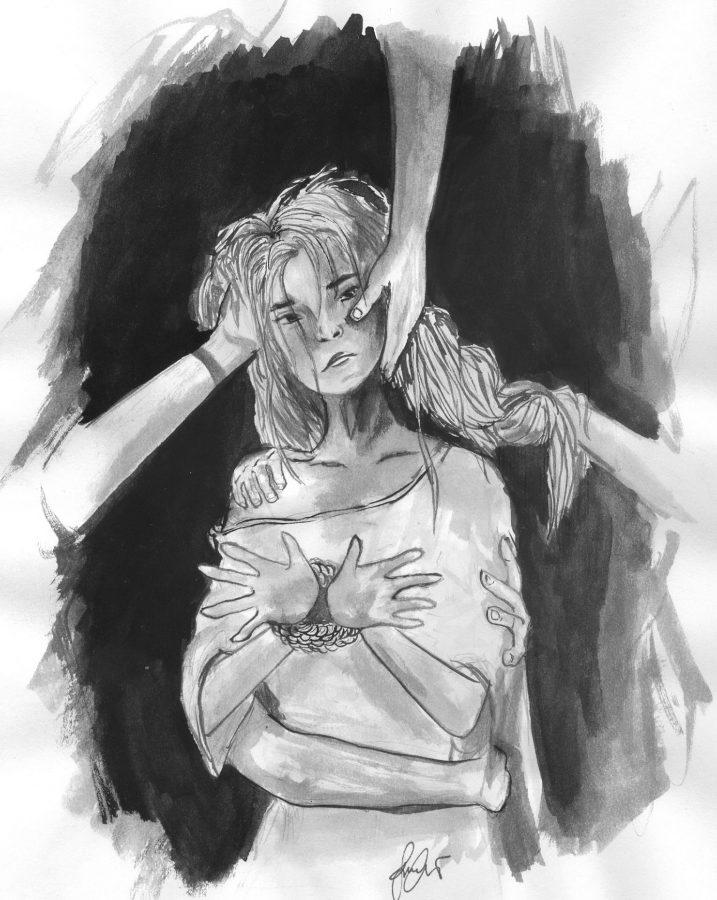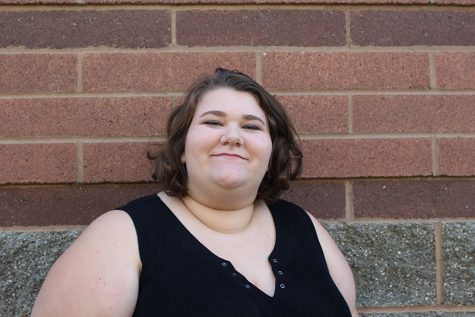A woman walks the street, late at night, skimpy clothes glinting under yellowed streetlights.
A run down “massage parlor” is the storefront for the hallowed halls, holding misery and sucking life out of its inhabitants.
A motel room, chains inside both literal and figurative, men passing through but the women never leaving.
The workers in the back at that seedy restaurant never seeing a pay stub for the sweat they pour into the hours of hard labour.
This is the reality for many in the state of Washington, as well as all over the world. To combat the ever present force of human trafficking, volunteer-based organizations have sprung up. One such organization is the Federal Way Coalition Against Trafficking (FWCAT), Co-founded by Brenda Oliver in August 2011.
“Our mission statement [I would say] is ‘Prevention through Education.’ We stress prevention,” Oliver said.
All of these organizations are backed by volunteers. They survive on the passion others feel for the cause and are built on the good hearts of the community. Federal Way, one of the bigger cities in the Pacific Northwest, fuels human trafficking just like any other major city, with ports so close and large freeways to move people to and from, it can be hard to escape the growing trade.
“[I do not think] it is just a Federal Way problem. We deal with Federal Way because that is the capacity for what we can do with our volunteers. [I think] that Western Washington is a bigger hub because the I-5 corridor is huge, there is the Canadian border right there and we have a lot of port cities. It is something that [I believe] the more you look for the problem the bigger the problem becomes, we are just starting to gather information,” Oliver said.
The type of business being brought to a city can affect the rate of human trafficking. According to Oliver, major cities are attracting more traffickers due to a higher percentage of tourism and the mixing of business with pleasure in a damaging way.
“Bigger cities are going to attract more human trafficking. There are more travelers and businessmen. Some of the biggest hubs would be Las Vegas, Los Angeles, Atlanta, Portland is a big one (Portland has more strip clubs per square mile than Las Vegas),” Oliver said.
Most traffickers are not using blunt force right off the bat. They go through extensive processes to gain the trust of their victims.
“Traffickers use a term we call the ‘Grooming Process’ to coerce people. They will take anywhere from six months to a year, ‘dating’ them, building up their confidence, buying them things, doing things for them and then begins the cycle of domestic violence,” Oliver said.
Social media has effects that can be seen in many parts of daily life, from the way people interact to the buying of goods but one market that stays hidden is the human market. This is not the offer on Amazon Prime and there is no Groupon for this but Oliver shares her opinion on the way digital mediums have affected the human trafficking trade.
“Due to social media, it can make it easier for traffickers to get a hold of people, whether it be the grooming process, exploiting, blackmail or the buying/selling process. I cannot really say whether it has increased the amount of trafficking happening, even the police cannot keep up with internet crimes but it has definitely made an impact, especially on the buying/ selling end of it,” Oliver said.
Human trafficking remains mainly underground, brothels being fronted by “Health Spas” or “Nail salons.” The grey area surrounding the trade can leave many people uneducated or under the impression it will never affect their life.
“[People] do not believe it [human trafficking] happens here. They think it will not affect them. I see that with a lot of parents. The minute you start talking about cyber safety for children they will listen but if it is about the dangers of trafficking they think ‘that will not happen to my child,’” Oliver said.
Many organizations focus on child trafficking. Some such as Love146 believe that they should focus their efforts into one area to give better attention and make a greater impact. FWCAT also focuses their efforts on ending modern day child slavery but are not specifically geared towards minors. There does not need to be any proof of coercion or force present when minors are involved for a trafficker to be convicted.
FWCAT defines human trafficking when someone recruits, harbors, transports, transfers, provides, obtains or receives by any methods another person knowing that force, fraud or coercion will be used to cause the person to engage in forced labor, involuntary servitude or a commercial sex act (sex trafficking).
“A group [that is more vulnerable] would be runaways. Experts say that after 48 hours, kids will need their basic needs met and within 48 hours a trafficker will try to pick them up,” Oliver said.
A big focus that FWCAT has in the education side of things, making sure the community is aware of the signs and warnings to look for.
“[Some signs to look for are] hotel keys, whether a child is running from something or running towards something, changes in behavior, nails done or new material possessions, personality changes. Part of what we do in schools, is make sure that kids know to advocate for one another. Making sure they know that if they see something that they should alert an adult. We also work on using our voice to advocate for a more proactive law enforcement,” Oliver said.
Raising awareness for the cause also factors into the work the Oliver does, FWCAT holding an annual march [this year it is May 20] to make the underground trade not so secret, hopefully impacting lives in a positive way.
“We had a girl who was trapped in a hotel room we passed during our march and she said if she ever got out she would join in the march for awareness. This year she is joining. We do the walk every year to raise awareness and say ‘this is happening’ hoping it can cause a ripple effect and get more people educated,” Oliver said.
According to Love146 the rehabilitation of human trafficking victims can be devastating, leaving the children with depression, anxiety, drug addiction, STD’s, unplanned pregnancies and much more. Oliver and her fellow volunteers, realizing the reality for many survivors, founded the organization on the idea of prevention. Educate to prevent, this idea leading to the annual awareness walk and the education programs they do through the school systems leads the way to a future that many hope sees human trafficking eradicated.
“We need to wrap our arms around our youth. It is more costly and timely to rescue and restore someone than to take preventative measures. We need to mentor and support our youth. The road to recovery is longer and harder. It is a community effort, we cannot always fix a bad home but what we can do is support kids and educate the community,” Oliver said.



